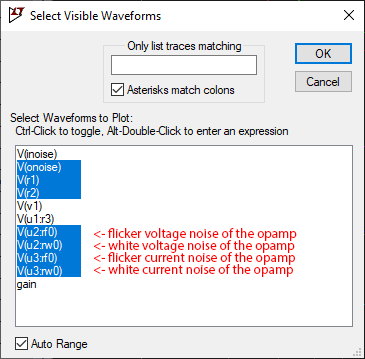When doing system noise calculations using LTspice using the .noise instruction, I can plot the total output noise and I can plot all the individual noise contributions to output noise from all components that contain some resistance (resistors, caps, inductors, voltage sources, even transistors) by clicking on them. But this selection method does not work for opamps.
How can I plot the noise contribution of individual opamps ?






noiselessflag for them to avoid contributing to the total result. \$\endgroup\$